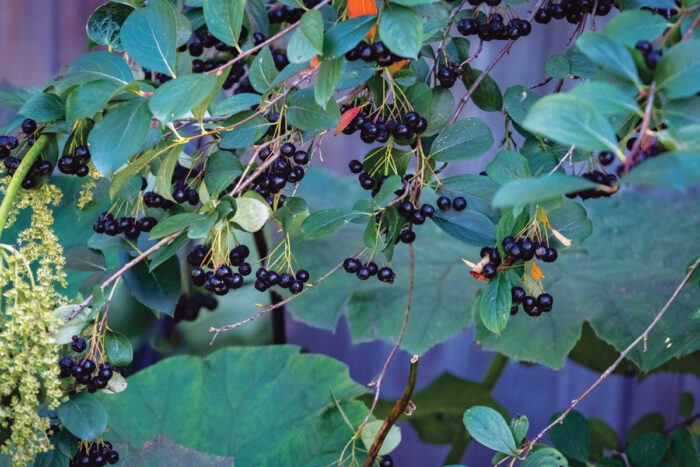
The following plants come from habitats that are seasonally or permanently wet, yet they can thrive in drier upland regions too. They are also tolerant of different soil types and textures.
Shrubs
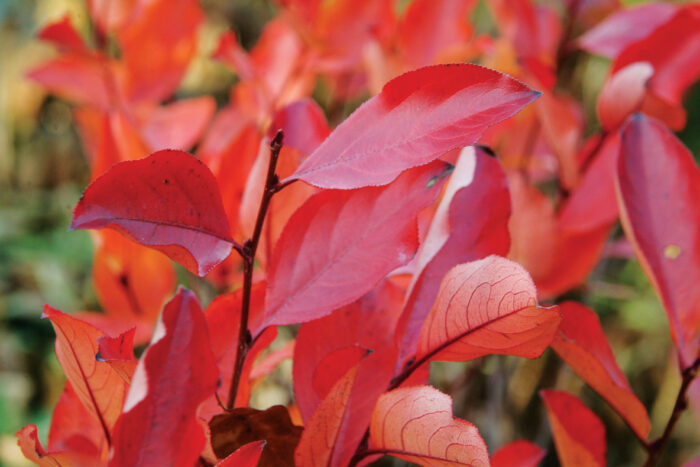
‘Autumn Magic’ black chokeberry puts on a colorful show in an array of conditions
Name: Aronia melanocarpa ‘Autumn Magic’
Zones: 3–8
Size: 3 to 6 feet tall and 4 to 7 feet wide
Conditions: Full sun to partial shade; average to moist, well-drained soil
Native range: Eastern North America
If you want a clue as to which plants are durable and adaptable, look to the ones that landscape professionals use heavily in commercial settings. Those sites generally have poorer soil, and plants can suffer from lack of attention once planted. Black chokeberry is used in urban areas for its tolerance of these conditions. It is cold hardy and can adapt to a variety of challenging soil types, pH levels, and moisture conditions. Its fruit also has a high concentration of antioxidants as well as other health benefits. Black chokeberry works equally well as a single specimen, massed, or as a hedge. The small white flowers are beloved by bees, but the most striking feature is the brilliant autumn foliage in shades of red, yellow, and orange. I recommend the compact ‘Autumn Magic’ for its consistent reddish-purple fall color, which makes it a great native substitute for the highly invasive burning bush (Euonymus alatus, Zones 4–8).
Summersweet is an eastern native that can handle western soil
Name: Clethra alnifolia and cvs.
Zones: 3–9
Size: 5 to 8 feet tall and 4 to 6 feet wide
Conditions: Full sun to partial shade; average to moist, well-drained soil
Native range: Eastern North America
When I left the acidic, moist soils of the East Coast for the drier, high pH soils of the Midwest, I resigned myself to not being able to grow my favorite shrub for fragrance—the fittingly named summersweet. I was ecstatic when I found out that it was actually adaptable to dry, higher pH conditions, and I now have it in several areas of my garden. I haven’t found that any one cultivar excels over another; choosing one is more about ultimate size, since that can vary widely by cultivar. The straight species (pictured) and most of the cultivars have white flowers, but several, including ‘Pink Spires’ and ‘Ruby Spice’, have pink ones. Plant it near outdoor seating areas in summer; the upright panicle flowers give off a heady fragrance. Summersweet also has golden fall foliage that can light up shady areas in autumn.
Perennials
‘Berry Awesome’ hibiscus prefers wet sites but handles average moisture like a champ
Name: Hibiscus ‘Berry Awesome’
Zones: 4–9
Size: 3½ to 4 feet tall and 4½ to 5 feet wide
Conditions: Full sun to partial shade; moist, well-drained soil
Native range: Hybrid
In the past 15 years or so, breeding efforts have created many cultivars of hardy hibiscus (H. moscheutos and cvs., Zones 5–9). I prefer the less-used common name “swamp rose mallow” because it says much about where the plant originated and thrives. However, this species is surprisingly adaptable to garden soils with average soil moisture and seems immune to heat and humidity. I find most varieties appealing, but I’m especially in love with ‘Berry Awesome’ from the Summerific® series, a hybrid of H. moscheutos that makes a florific display of showy 8- to 10-inch-wide magenta-pink flowers. This plant provides as close to a dramatic tropical look as northern gardeners can get, whether you have fertile or poor soil.
A perennial that can handle drought and low fertility, white heath aster sparkles in autumn
Name: Symphyotrichum ericoides
Zones: 3–9
Size: 1 to 3 feet tall and 1 to 1½ feet wide
Conditions: Full sun; dry to medium, well-drained soil
Native range: North America
Asters have long graced gardens, and many species satisfy the desire of gardeners to use native plants. Asters such as ‘October Skies’ aromatic aster (S. oblongifolium ‘October Skies’, Zones 4–8) have gotten much attention as highly adaptable, long-blooming, late-season stars, but I believe that gardeners should be just as excited about the lesser-known white heath aster. I am quite fond of this adaptable and late-blooming inhabitant of dry and moist mesic prairies. White is always a welcome flower color in most gardens, and this species is remarkably tolerant of drought and poor soil. It provides valuable nectar late in the season for insects, especially bees and butterflies. This perennial is rhizomatous and spreads vigorously, making it a great selection for erosion control or for use as a ground cover.
For a compact plant with tons of flexibility, turn to ‘Short ’n’ Sassy’ sneezeweed
Name: Helenium ‘Short ’n’ Sassy’
Zones: 4–8
Size: 1 to 1½ feet tall and 1½ to 2 feet wide
Conditions: Full sun; average to moist, well-drained soil
Native range: Hybrid
One of my favorite native flowers that can be found growing throughout the United States and Canada is the late summer–blooming, sunshine yellow–flowered sneezeweed (H. autumnale, Zones 3–8). Over time, cultivars have been selected that have expanded the color range to include red, amber, and orange. Sneezeweed can be used as a perennial border plant, but it has a detraction that I believe has reduced its popularity. As with garden phlox (Phlox paniculata and cvs., Zones 3–8), the foliage can begin to dry up toward the bottom of stalks, and other plants must be planted around it to hide the “bare legs.” Although I find the taller forms very useful, particularly for providing nectar to pollinators late in the season, there are several cultivars selected for shorter, more compact growth that reduces the amount of stem that becomes bare. ‘Short ‘n’ Sassy’ is one such stellar selection. The flower ray florets, a mix of yellow and orange, surround a chocolate center cone. Its scale is dramatically reduced from the species and brings the plant from the back of the border to the front. This perennial prefers moist soil but can handle average soil with brief periods of dryness. It is not bothered by different soil types or pH levels.
| TECHNIQUE |
A quick guide to understanding your soil
Absolutely nothing beats a soil test to determine nutrient levels and other soil characteristics that are critical to plants, but there may also be visual cues and other at-home methods you can use to understand soil properties to alert you to potential problems. Keep in mind that soils are variable around the country. For example, the Midwest’s dark, loamy soils, the Southeast’s red clay, and the Southwest’s calcic soils all have differences in composition and color.
Color: The addition of organic matter is critical to providing nutrients to plants. It should create a rich brown additive color (photo top). You should know what color healthy soil is in your region. For instance, in the Midwest, soil turning gray is indicative that organic matter is decomposing, increasing the mineral percentage incrementally.
Drainage: You can’t beat a percolation test to determine drainage. Dig a hole as deep as the roots of your plants will grow downward. Saturate the soil of the hole, then fill the hole with water. Water must drain completely out of the hole in 10 to 60 minutes for proper drainage (but check to make sure that is consistent with recommendations for your region). Water disappearing too quickly is a sign of too much drainage; water disappearing too slowly indicates limited or no drainage.
Nutrients: If your plants are either failing or not thriving despite adequate water and sunlight, your soil could be nutrient deficient. Foliage is usually the first part of a plant to show symptoms. If you notice these signs, it’s time for a soil test.
pH: A soil test is necessary to determine accurate pH, but knowledge of your region is the first indicator of what pH you are likely to have; entire regions will be relatively similar in pH, and it is difficult to change that over the long term. Poor performance, chlorotic foliage, and stunted plant growth are signs that your pH may be the opposite of what those plants prefer.
Texture: Loam is considered ideal soil for the growth and health of most plants. Loam should be 40% sand, 40% silt, and 20% clay. Mixing a small amount of soil slowly with water, rolling it into a ball, and then flattening it can give you an idea if percentages are off. If the sample holds together too firmly, it might have too much clay. If it separates too easily, it might have too much sand.
Fine Gardening Recommended Products

Plant Covers Freeze Protection 10 ft x 30 ft Floating Row Cover 0.9oz/yd²
Fine Gardening receives a commission for items purchased through links on this site, including Amazon Associates and other affiliate advertising programs.
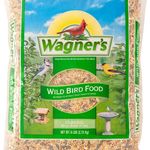
Wagner's 52003 Classic Blend Wild Bird Food, 6-Pound Bag
Fine Gardening receives a commission for items purchased through links on this site, including Amazon Associates and other affiliate advertising programs.
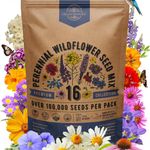
Organo Republic 16 Perennial Wildflower Seeds Mix for Indoor & Outdoors
Fine Gardening receives a commission for items purchased through links on this site, including Amazon Associates and other affiliate advertising programs.


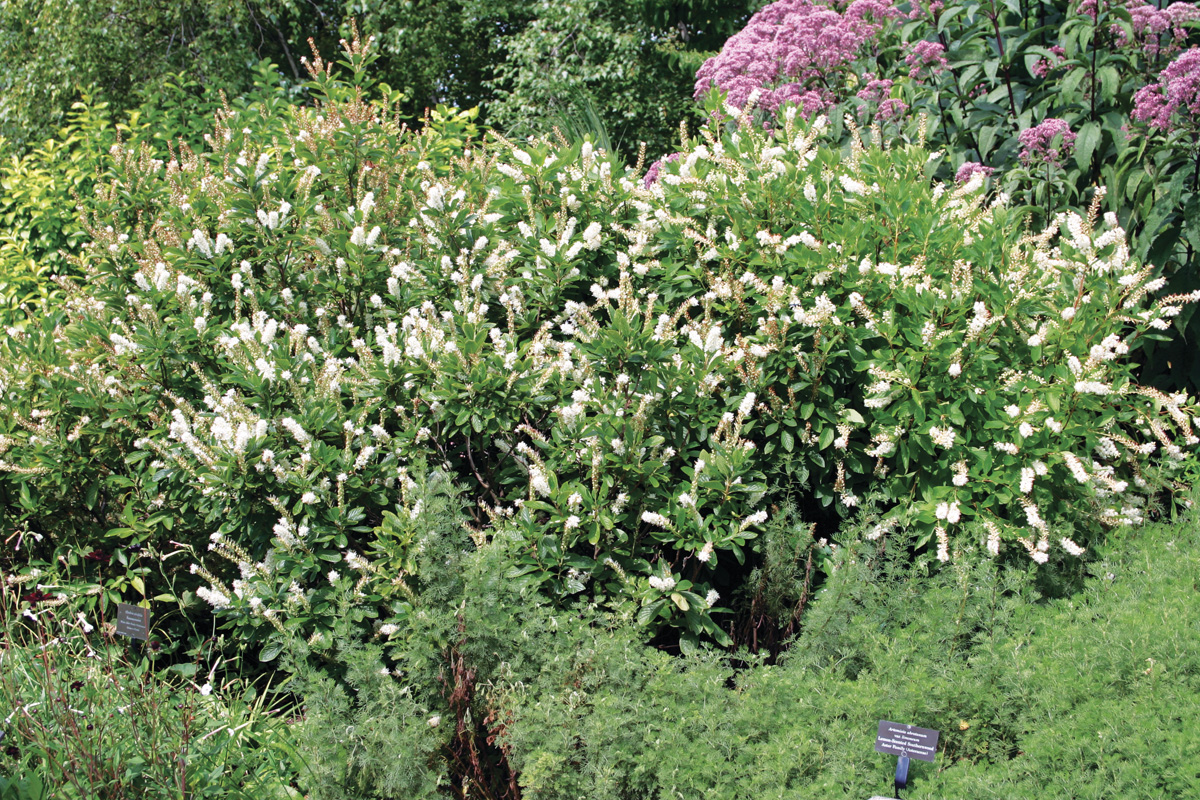

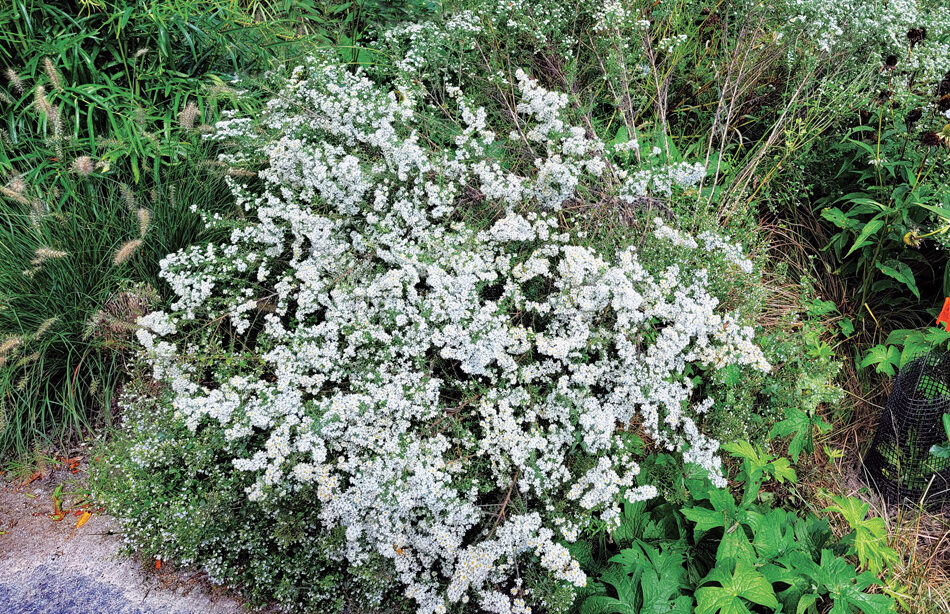
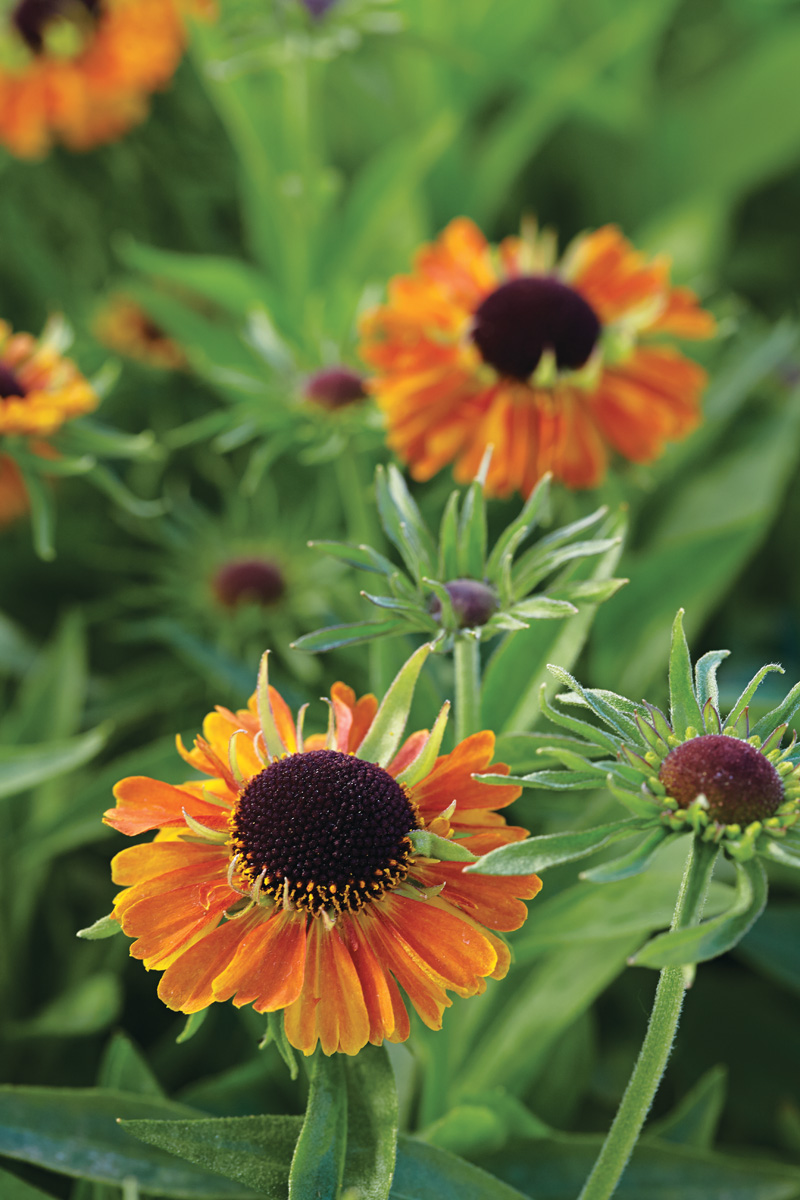


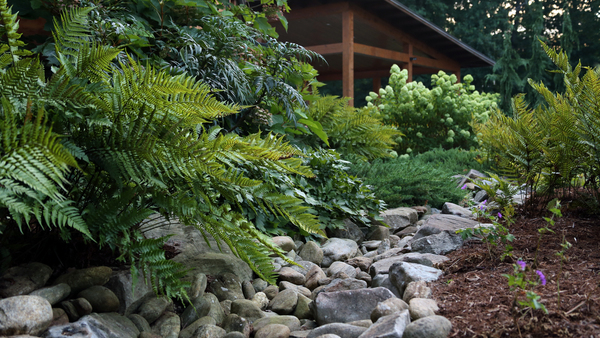














Comments
Log in or create an account to post a comment.
Sign up Log in